On our trip west last month, we shared a flight with a contingent of Boy Scouts bound for Philmont Scout Ranch in New Mexico. Seeing them started me thinking about my own visit to Philmont, and me being me, I did the math and realized that this month is the 45th anniversary of that expedition. So I went digging in my archives and found a little narrative I wrote about part of the adventure for a class assignment, along with some old photos, my trip log, and some other relics, and it all seemed too good not to share.
So today, a guest post, from… teen-age me!
It’s about climbing a mountain…
1979, all things considered, was pretty much an average year, but for at least one group of boys, it was the year of an adventure to be remembered for a lifetime. Eleven Boy Scouts, most of us around fifteen years old1, made the cross-country trip from Pennsylvania to the Philmont Scout Ranch near Cimarron, New Mexico, to backpack the Sangre de Cristo Mountains, a southern range of the Rockies. This range contains a spectacular array of sceneries and is the home of several magnificent peaks, including Baldy Mountain. Baldy is the highest peak on the large Philmont Ranch, and is one of the highest2 in the Sangre de Cristos. The trip was the source of countless stories and memorable adventures, but the clear high point of our 100-mile hike was the climbing of this mountain.
We first sighted Baldy from a considerable distance. It was not an immediately magnificent mountain, but nevertheless, it drew and held our attention from the first moment we saw it. Although the hike so far had been anything but monotonous, we were beginning to feel the effects of the New Mexico heat, the seemingly endless miles, and the diet of dehydrated food, so our expectations of this mountain in the distance served to distract us from these physical technicalities.

Of all the stories we had heard from Philmont veterans at home, the “Baldy climb” was told with the most reverence, and this reverence had transferred to us. Indeed, as we continued down the trail, the purple-brown rock and patches of snow on the steep east slope became more defined, and the outline of the peak against the deep blue sky progressively became the dominant feature on the horizon. Though we were then two days distance from Baldy, our anticipation grew.
It must be said here that, although we did view the upcoming climb with reverence, we had also accepted the stories we heard about the experience with some of the reservation any high-adventure story is accepted with. However, by the time we descended the mountain the morning after the climb, none of this reservation remained, and we had reached an almost euphoric state of mind.
Our first real taste of this came as we dragged ourselves from our base camp tents at 9:00 the night of the climb, shouldered our packs, and headed toward the base3. It was a cool night, quite a relief from the heat of the day’s hiking. A bright full moon cast the landscape in shades of grey and silver, and even under the trees we hiked without lights. Except for a slight breeze rustling the aspens, the muffled grind of our feet on the trail was the only sound.
It was a good two-mile hike before we would break tree line. At first we walked without speaking as we came to full wakefulness and absorbed the magical atmosphere we were walking through. Gradually, we drifted into whispered conversation — old hunting stories, the habits of the male cougar, the possibility of seeing a bear tonight — the sort of talk that naturally arises at times such as this.
Conversation died as we crossed tree line and looked up at the now huge bulk of Baldy. The first 100 yards above tree line was a rather steep bank of granular snow (somewhat an anomaly for Allegheny-bred hikers in July). We increased our spacing to accommodate this, and slowly traversed the bank, digging our feet deep into the snow to prevent a fall. Beyond the snow the mountain was bare. The solid surface was covered by layers of rubble, rocks ranging from a foot up to a yard or more in diameter, lying like very large pieces of gravel on a pile. As we moved higher, the air cooled and the wind picked up. We reached the summit around midnight, exhausted and acutely cold. The actual temperature was around 45F, but 40 to 50 mile-per-hour winds made it feel much colder. We bedded down on the rocks behind a small wind break someone had pushed together from the rocks, and tried to sleep.
Early in the morning, we awoke and prepared for the spectacle of sunrise. In the predawn grayness, with no bright moon in the sky, the mountain had assumed a bleak, desolate appearance. The triumph we had felt last night was fading, worn down by a rough bed and the cold wind. Then, almost instantaneously our despondency was gone, as a flash of yellow-orange light spread across a section of the eastern horizon, and a small orb of deeper color appeared in the center.
The sun rose higher, and the rays of color shot out in all directions. Even the light coming straight to us was ray-like and brilliantly crystalline. Several lakes to our right gleamed like giant mirrors, and smaller mountains to the left cast odd minglings of shadow and reflection. As the sun climbed higher, the bright color faded into a clear, uniform blue.
We stood there staring for several minutes, not talking, not feeling the cold, just sharing the quiet grandeur, overwhelmed and humbled by it.
Then, a boy standing nearby began singing, and through the gusts of wind we caught a certain easily recognizable fragment of lyric: “Rocky Mountain High…”.
The rest of the story (from present-day me)
My school report ended with the sunrise, but of course there was more to this adventure…
Getting down off of Baldy was just as exciting as going up. After that sunrise, we descended a scree field on the north-east side of the mountain, a 1,000-foot shuffle-slide that was like nothing I’d done before.
Actually, the whole adventure was one “never before” after another: climbing a mountain over 12,000 feet high, panning for gold, climbing a tree with rope and spikes, building a trail… and more broadly, experiencing the Rocky Mountains for the first time, living in them, moving through them, getting to know them.

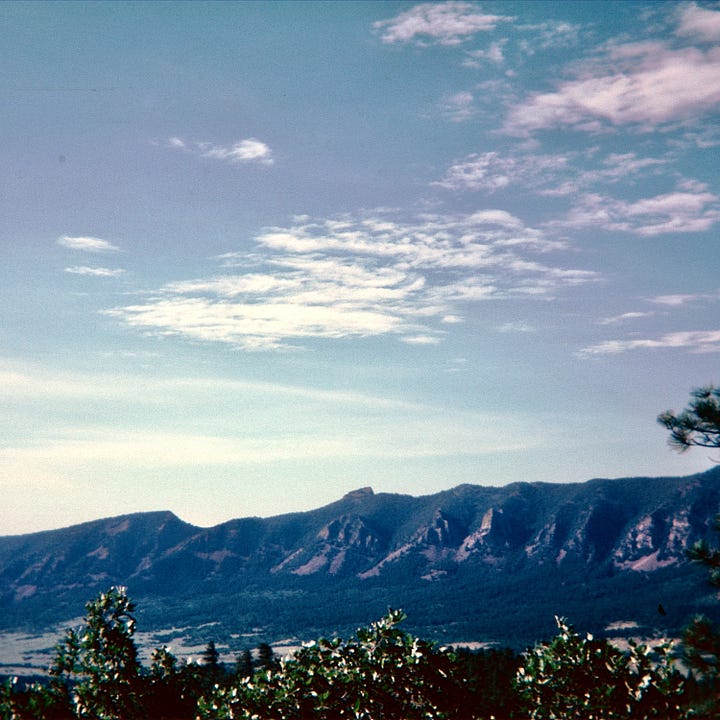
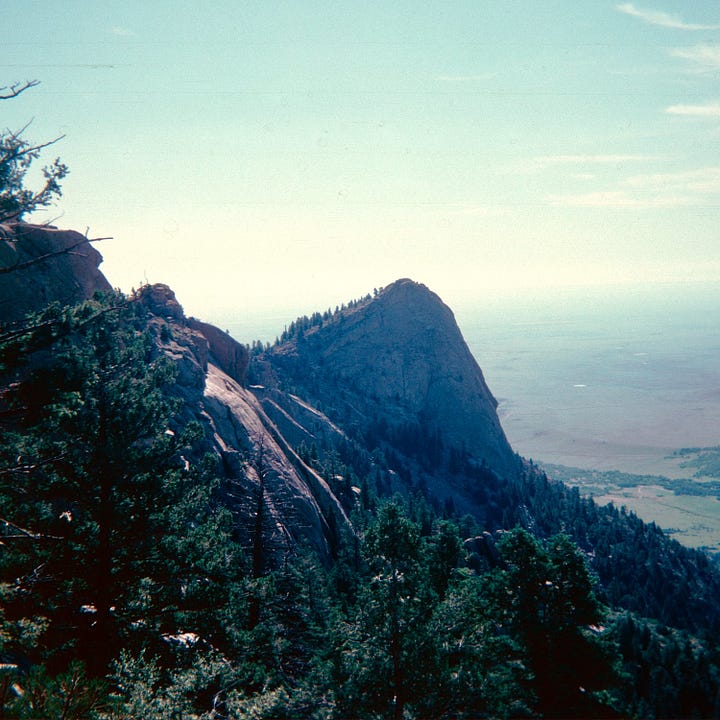
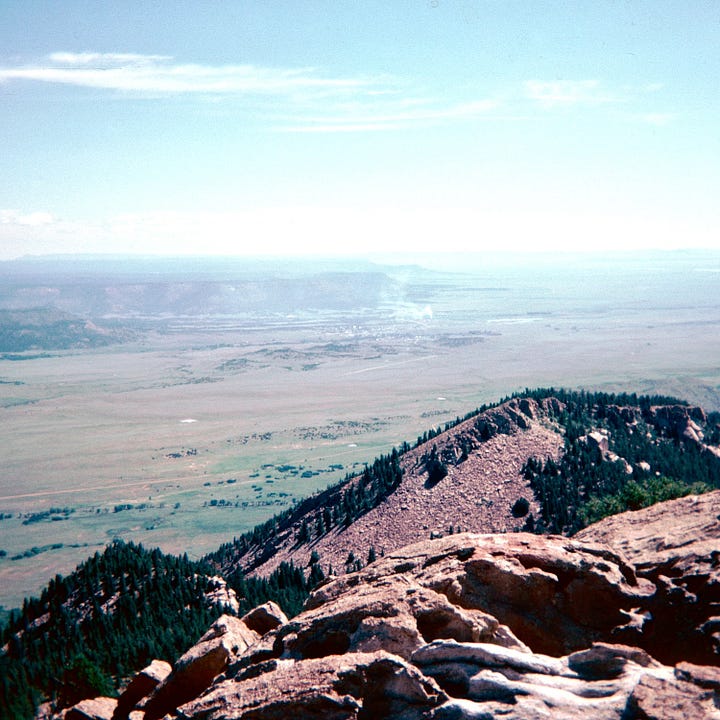

Indeed, by the time we traversed Tooth of Time Ridge and descended to the plain on our last day of hiking, we did feel at home there. And while we were glad to get back to Pennsylvania, and while I’ll always consider the Alleghenies to be “my” mountains, this first taste of the Rockies was strong medicine that has stayed with me, and it has pulled me back for many western adventures (hopefully there are more to come).
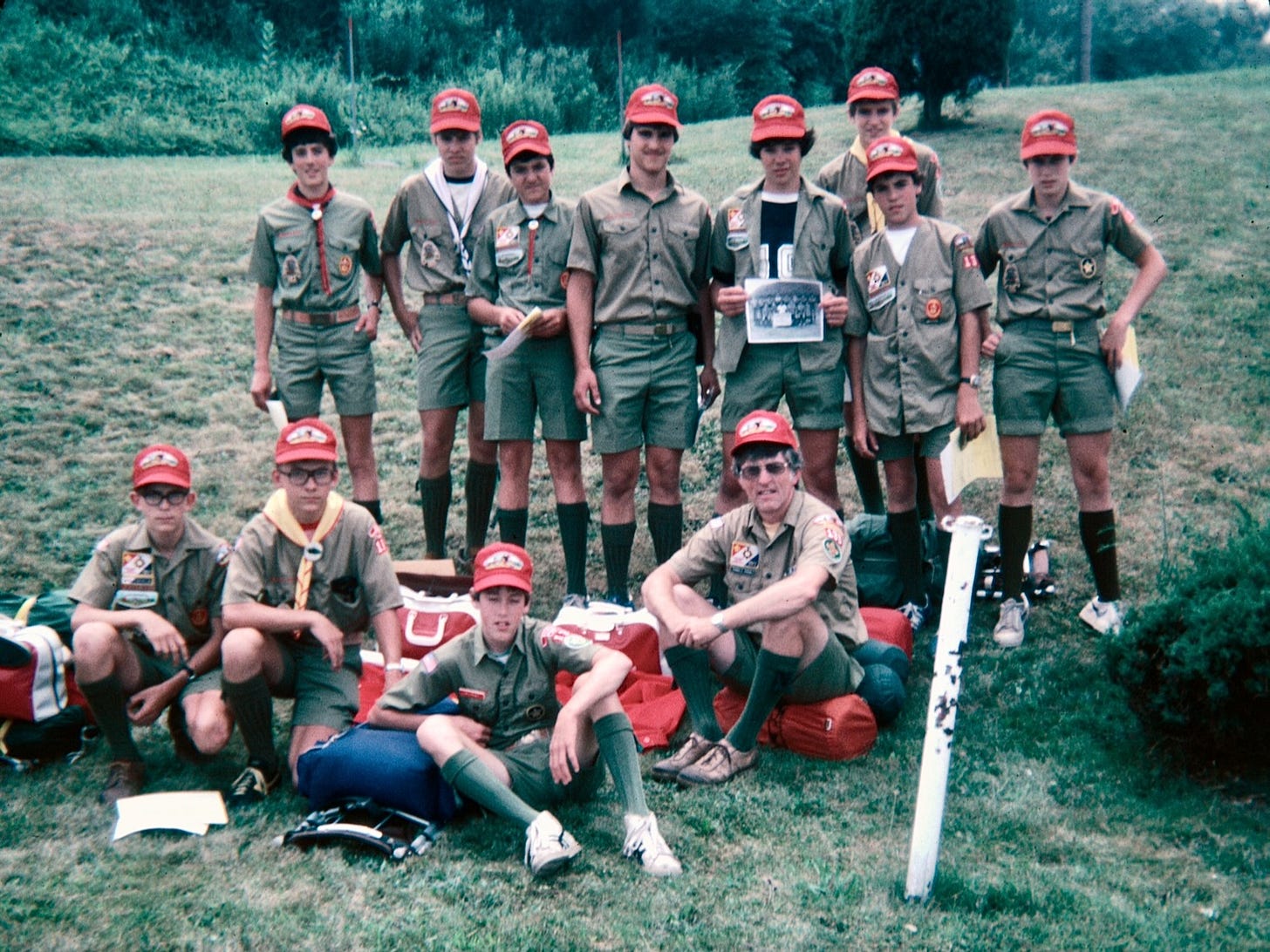
The throughline
Fundamentally, that Philmont expedition was my first extended time in the outdoors, and my introduction to the idea of purposeful, distance-oriented cross-country movement (along with the various physical competencies and problem-solving skills that go with that). This is a throughline that connects 14-yr-old me with 23-yr-old cavalry-officer me and with (much older now) ultra-runner me, here in 2024.
The army connection is easy to see — the small-unit teamwork and camaraderie of a crew (that looks and functions a lot like a squad), the uniforms... But believe it or not, the running connection is there, too. My first contact with the world of trailrunning and ultras came during that summer of 1979.
To prepare for Philmont, we hiked the Laurel Highlands Hiking Trail, covering its full 70.1 miles in a series of five weekend hikes.

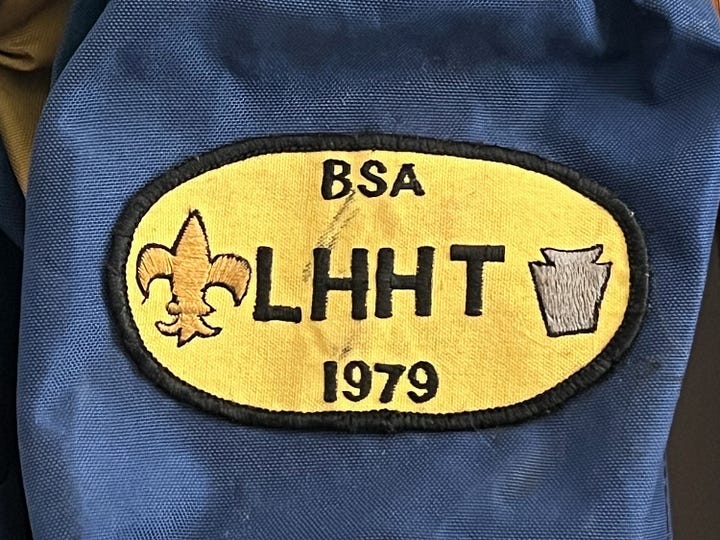
It was on one of those hikes, on a hot and humid June day, and I can still see it clearly…
There we are, a group of boys in our heavy leather hiking boots, collapsed on the banks of a creek for a short breather, still wearing our 40-pound packs, panting in the heat. Suddenly —magically — there’s a man there amongst us, and he’s… running? He’s shirtless and unencumbered, Tarzan-like in his tiny shorts and bandanna. He smiles and says hello, pauses at the creek for a quick sip, wets his bandanna, and then disappears down the trail. It happened so quickly we weren’t sure we’d really seen what we’d just seen. I’m sure it hadn’t occurred to us that you could even do that.
But of course you can do that, and it turns out that 1979 was the year that Joe and Paul Butchko started exploring the recently completed long-distance trail we were on (it seems likely it was one of them we saw)4. At some point that summer, the brothers and some friends made their first attempt at through-running the trail. They only made it 57 miles in 1979, but one year later, in the first official running of the Laurel Highlands Ultra, four runners made it to the finish. And 34 years later, in the same race, I made my own long-ultra debut (and scored my first and only DNF, getting to the same 57-mile point as those trailblazers did on their first attempt). I returned in 2015, finished the race, and later that summer I ran my first hundred-miler.

Would I be an ultra-runner today without those formative backcountry experiences from the summer of ‘79? Would I have become a soldier if I hadn’t been a Boy Scout? Both are possible, and surely they’re all three (scout, soldier, ultra-runner) different manifestations of some underlying aspect of my being. But it does appear that my trajectory was set that year.
I’m happy with how it has turned out.
Some other relics
Journaling
My journal entries were shorter back then…
Buckling
For better or worse, this was where I learned the concept of earning awards for distance-based accomplishment (and I suppose also the idea of telling people about it, with simple humble-brags, or otherwise).
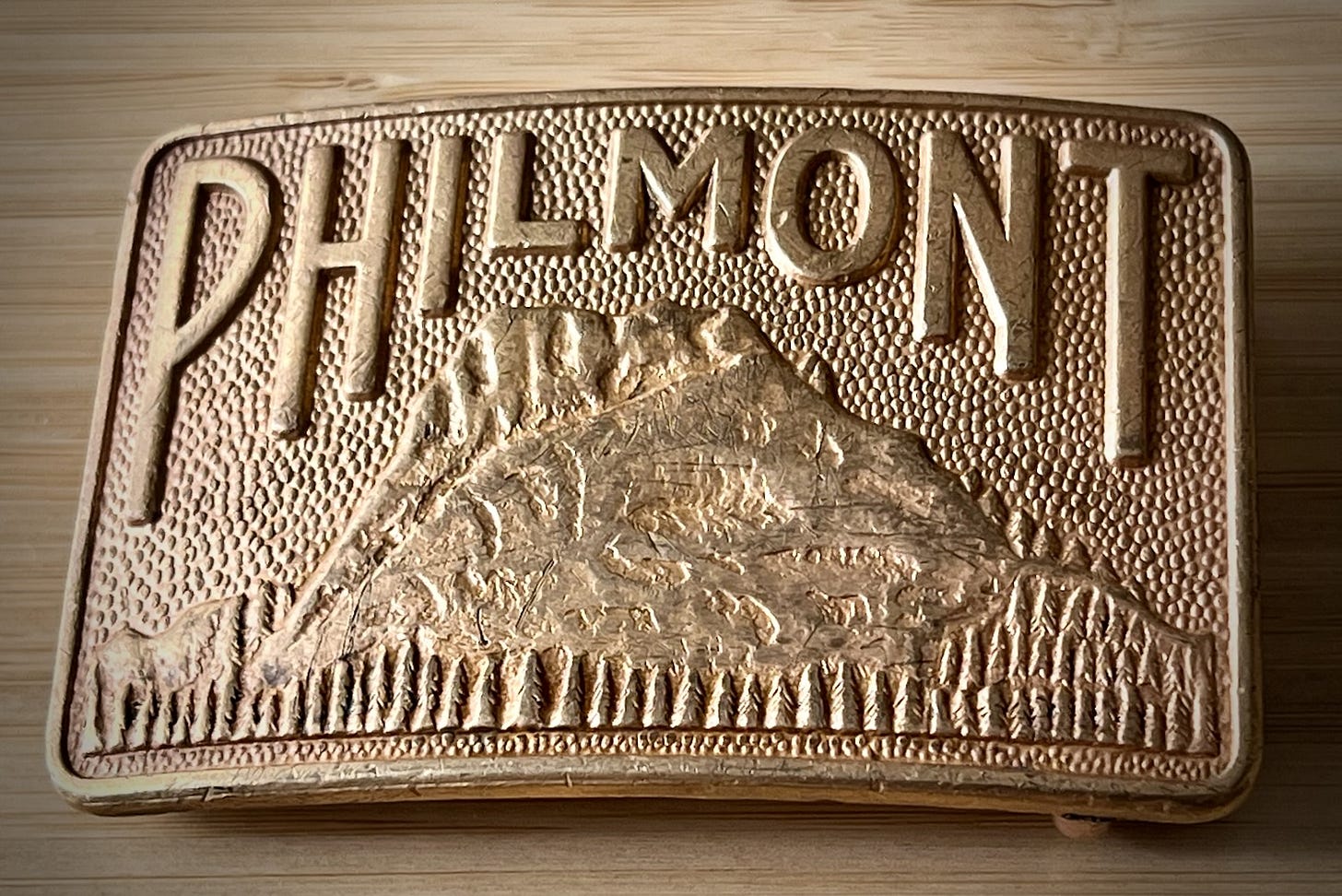
Miscellaneous
Curious what’s on a packing list from the 1970’s?
I was the youngest in our crew, having just turned 14.
Well, Baldy Mountain is the highest in the Cimarron sub-range… there are many higher peaks in other parts of the Sangre de Cristos. Still, at 12,441 feet, it’s a notable peak, and it would be 38 years before I got that high on foot again.
We’d hiked to our campsite at Copper Park, north-east of the mountain, earlier in the day. We set up our tents and slept for a few hours in the afternoon, and we left the tents and extra gear behind for the climb.
About the history of the Laurel Highlands Ultra: https://www.redpointproductions.com/laurel-70m-home (scroll down to the “70M History” section). About the brothers: Joseph Butchko and Paul Butchko




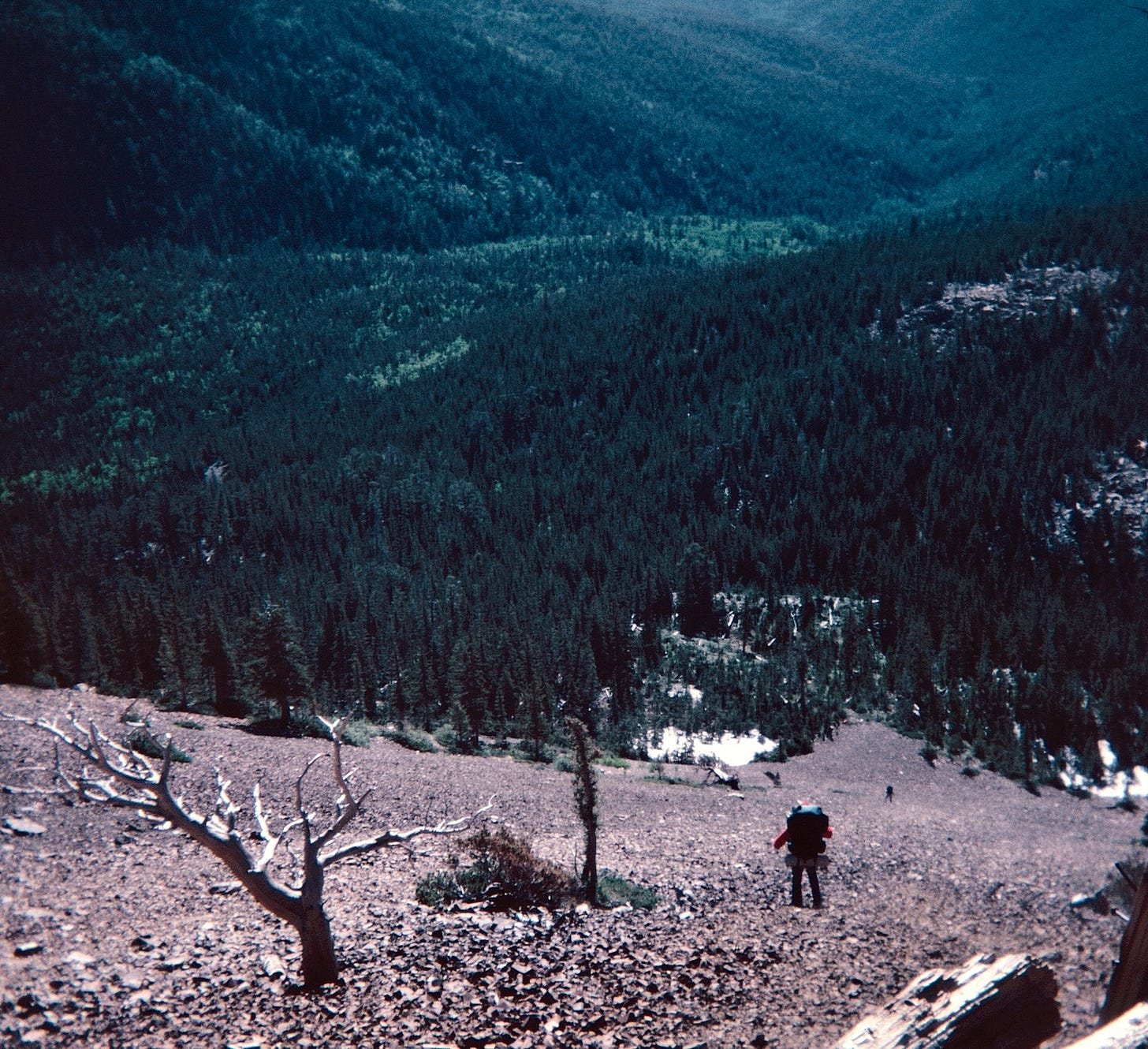

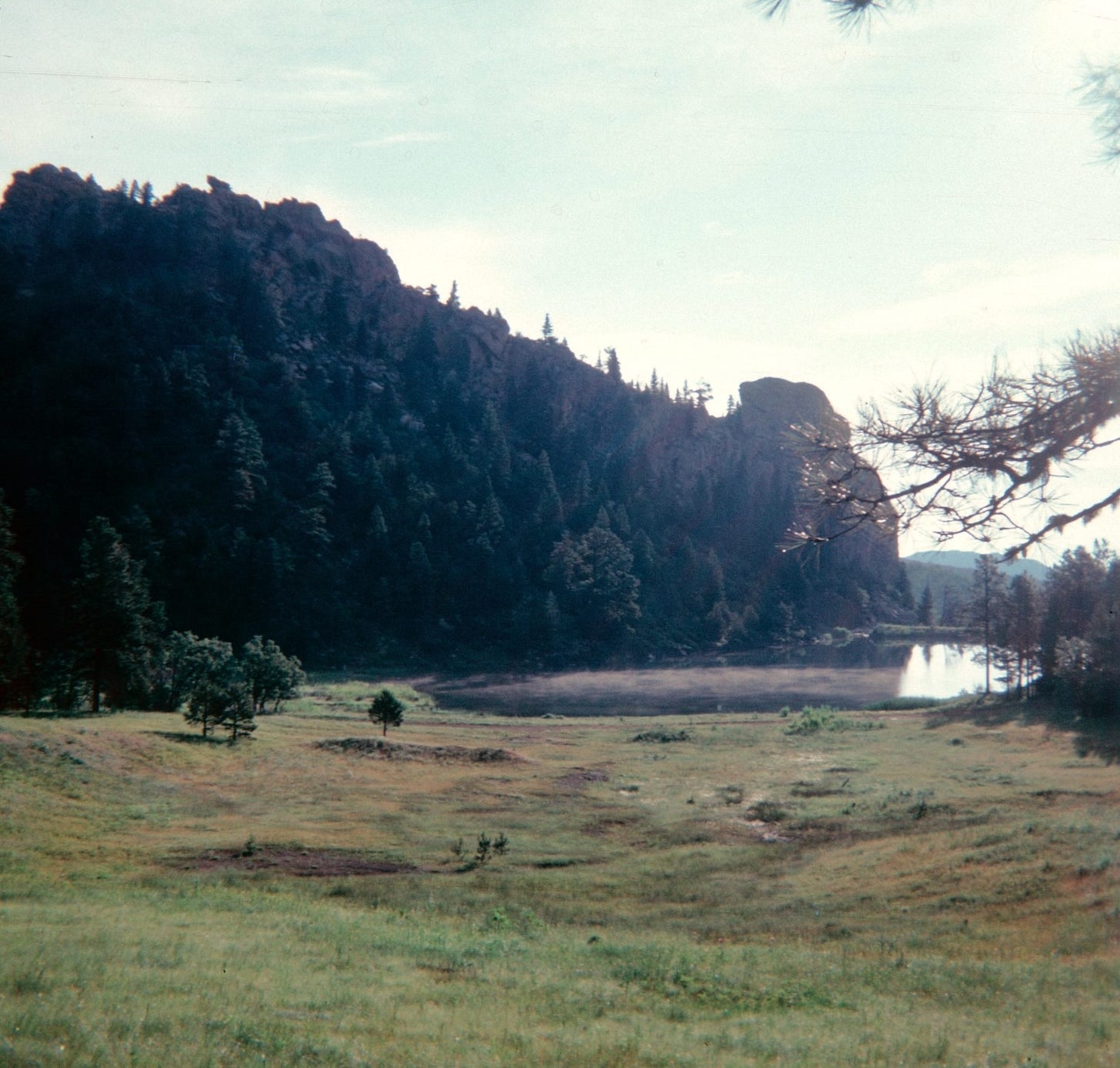
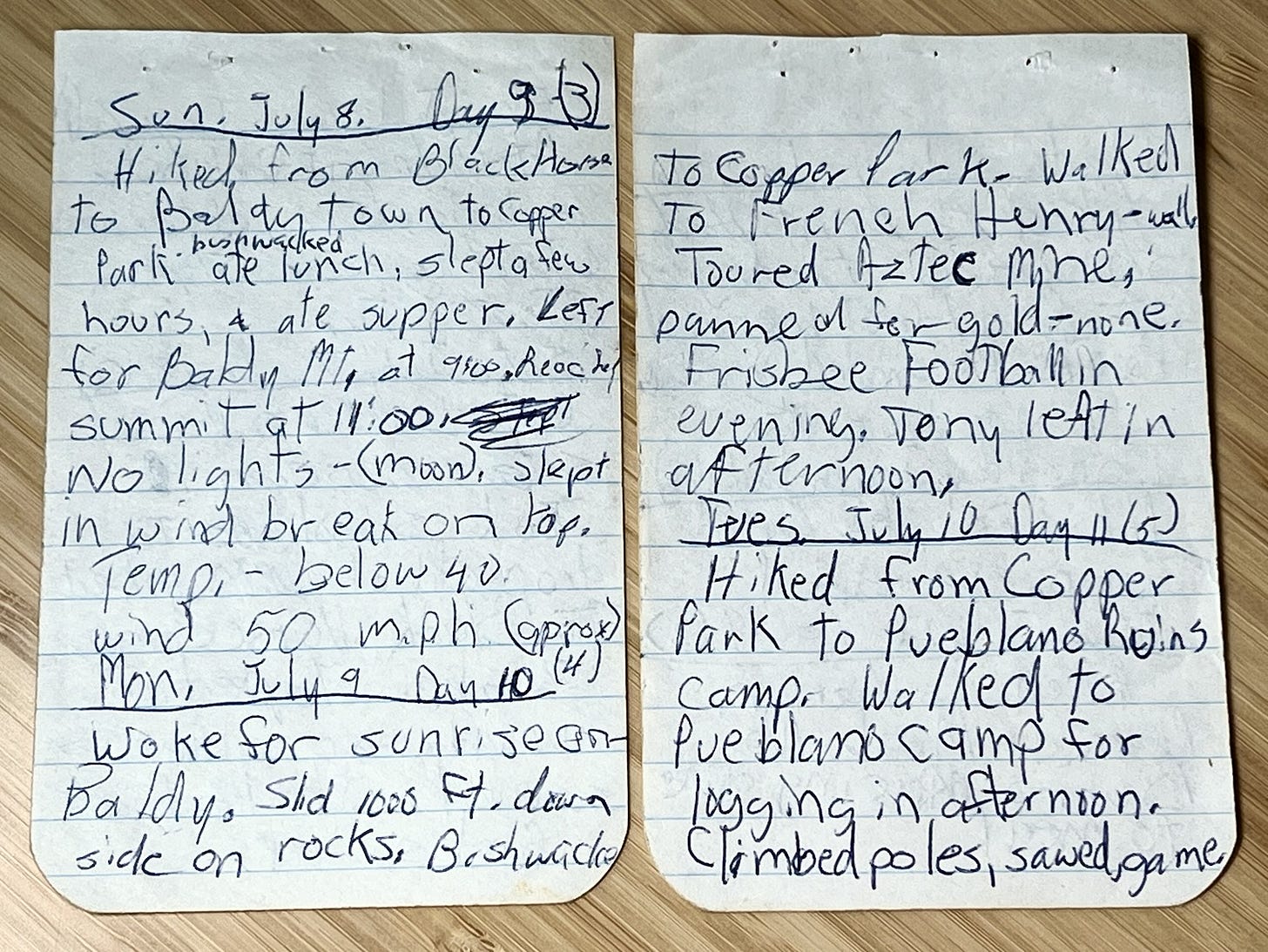
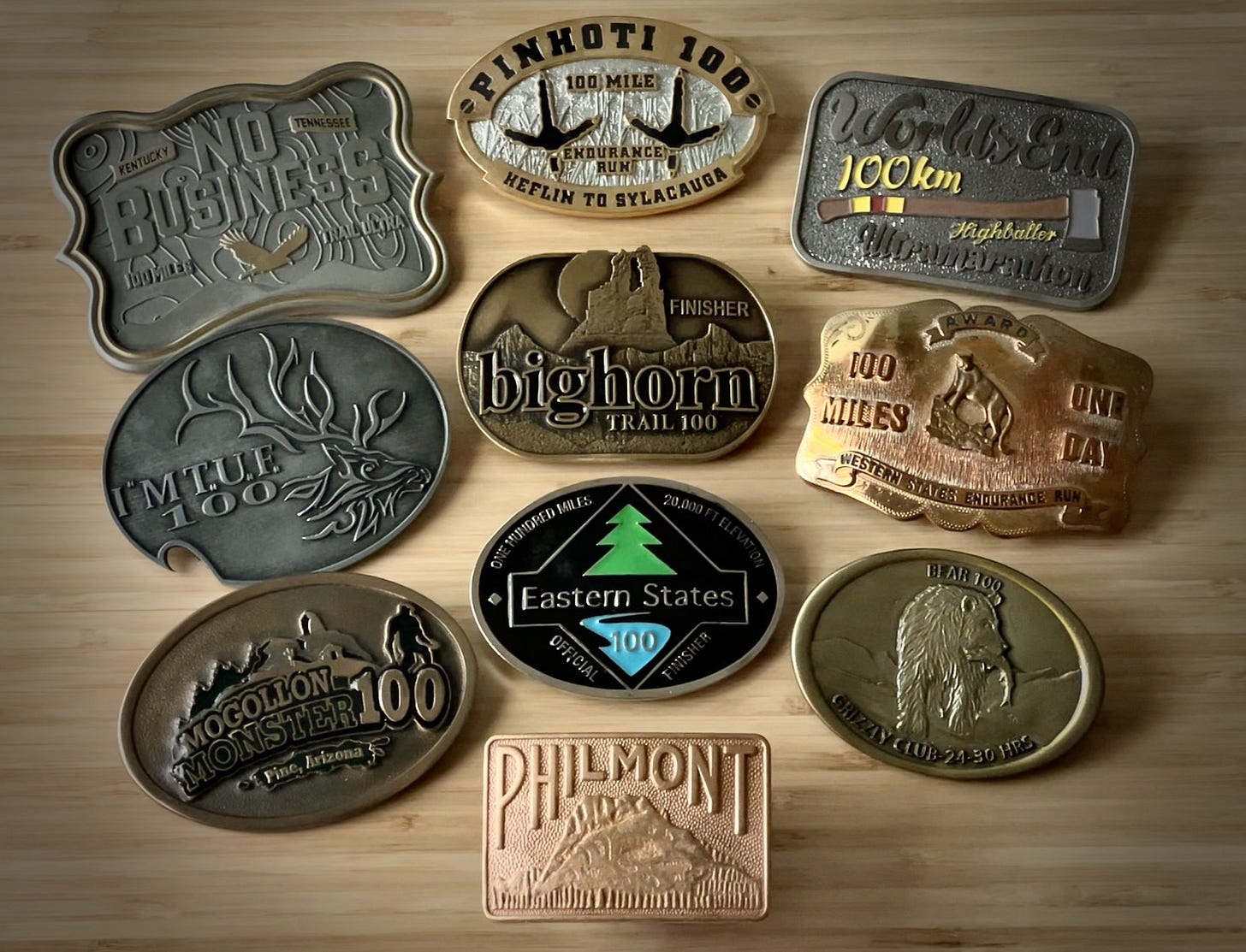
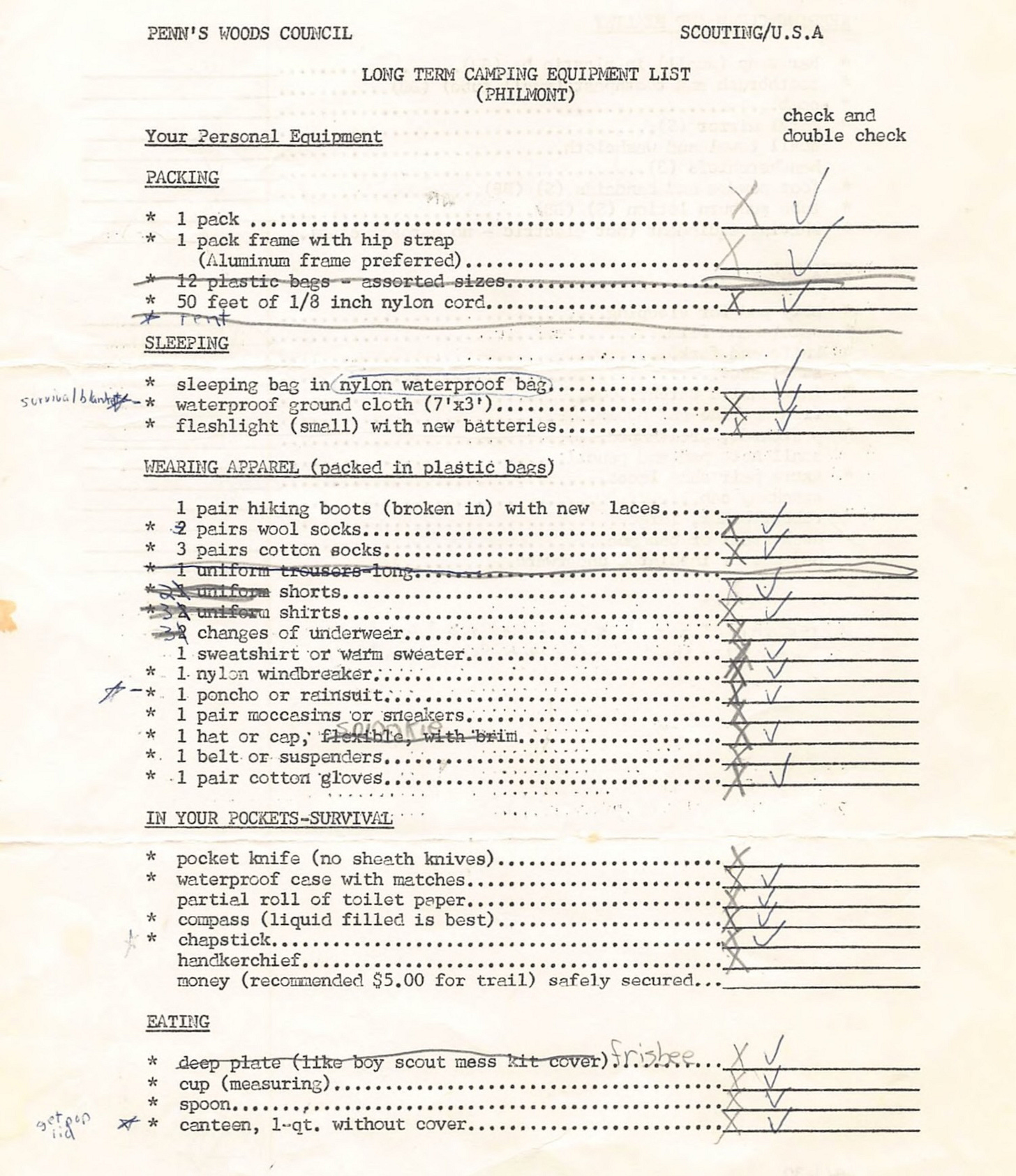
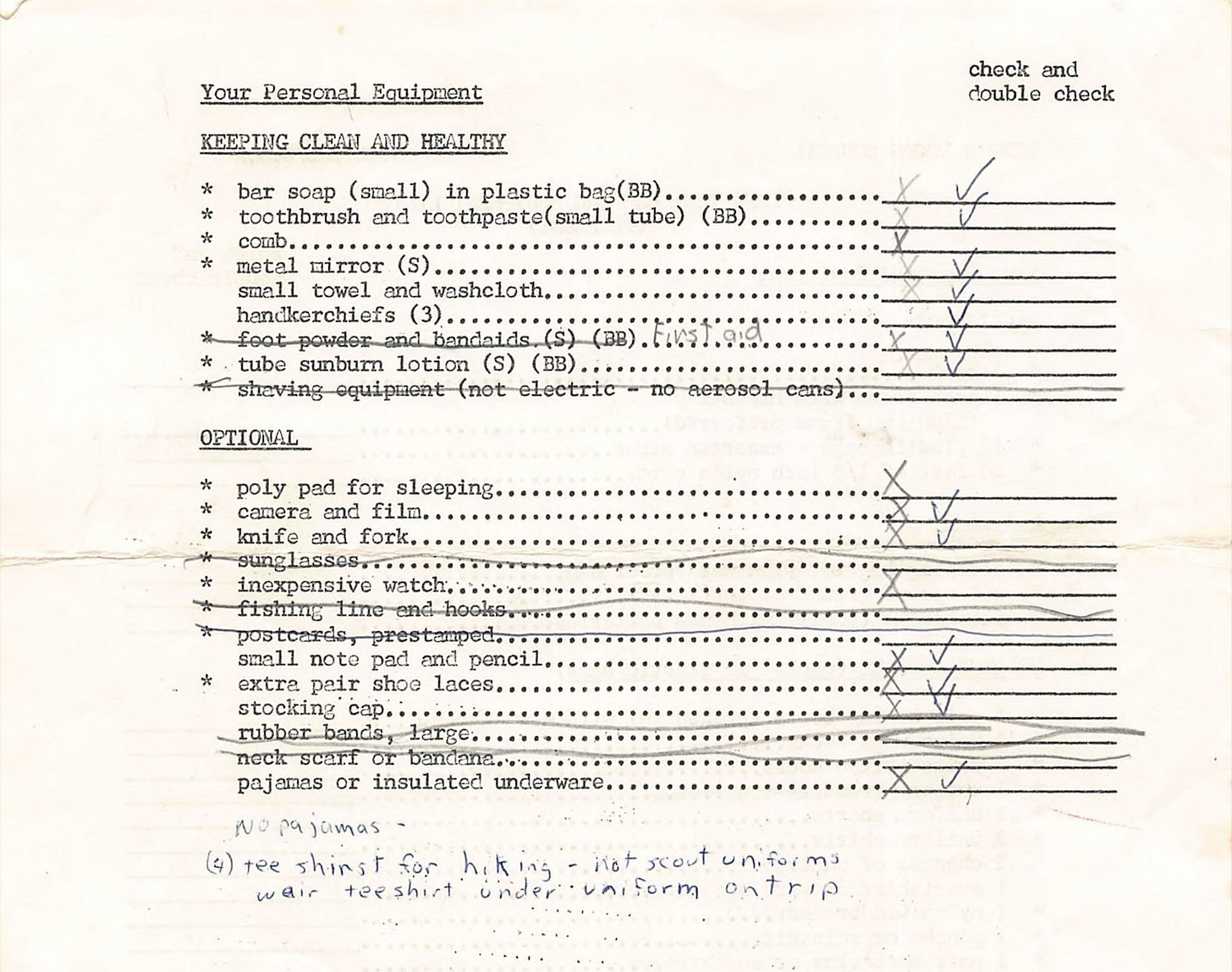
Nice story. Connected with me in many ways. I wish I could channel my 14 year old me and my young artillery officer me as I prepare for my 3rd 100mile race (read adventure) for the year.
Wow, great story! Thanks for sharing this. And I obviously like the part with the runner appearing from out of nowhere. :)